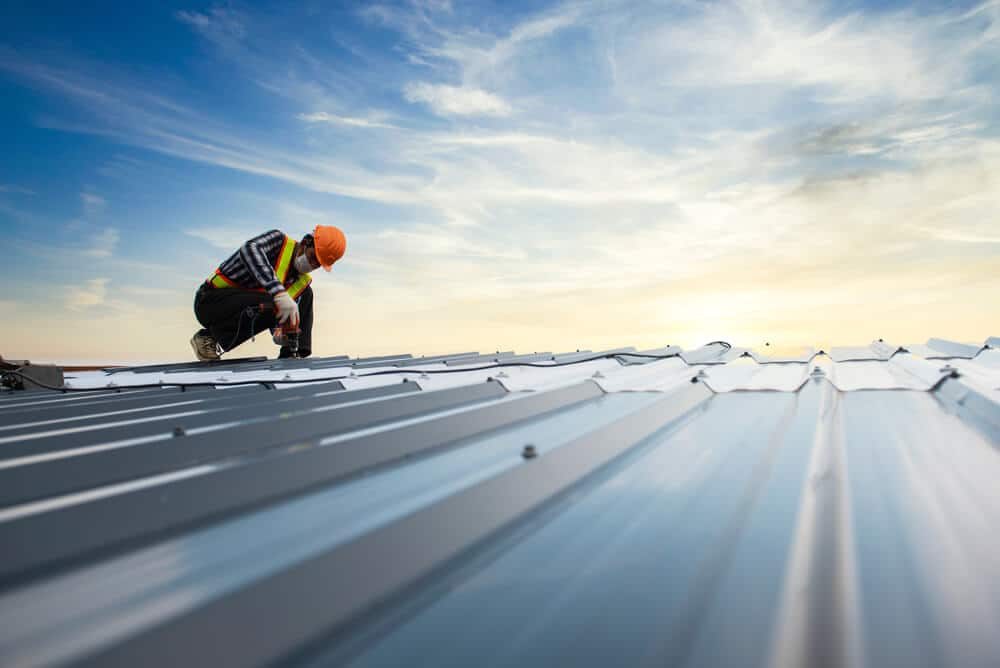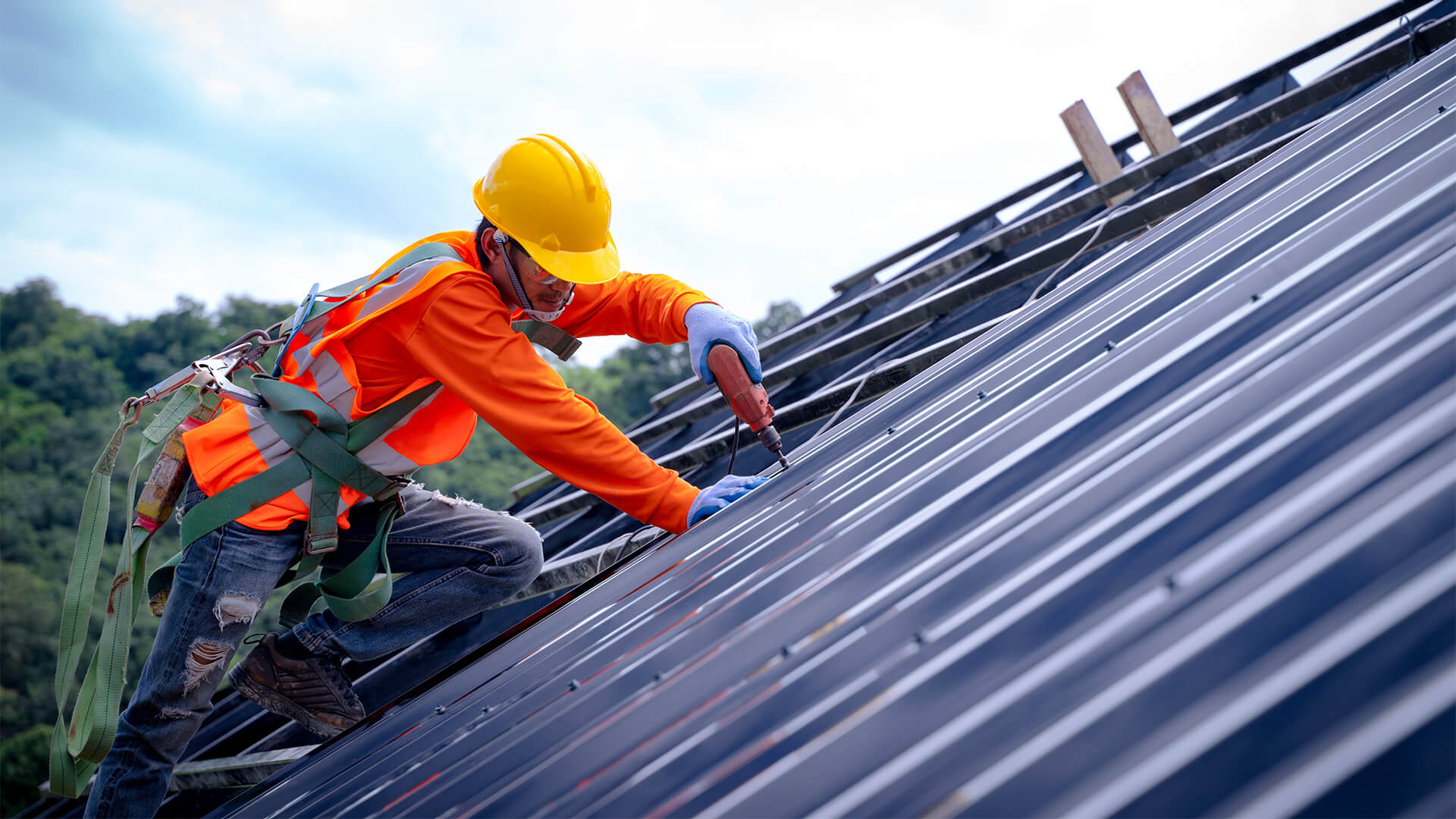Comprehending the Various Kinds of Roof Coverings: A Comprehensive Overview for Homeowners
With a range of options-- varying from the standard gable to the contemporary flat-- each type presents special advantages and challenges that need to straighten with the house owner's particular needs and environmental factors to consider. As we explore the details of various roof types, it comes to be apparent that one size does not fit all; the best choice may surprise you.
Saddleback Roof
Gable roofs, characterized by their triangular form, are among one of the most prominent roof covering styles as a result of their simplicity and performance in dropping water and snow. This layout features 2 sloping sides that meet at a ridge, enabling for efficient water drainage and minimizing the danger of water buildup. The steep pitch generally linked with gable roofs boosts their ability to handle hefty precipitation, making them appropriate for numerous environments.
Along with their sensible benefits, saddleback roofs supply aesthetic versatility. They can be adjusted to numerous building designs, from conventional to contemporary homes. The design can likewise suit added attributes such as dormer windows, which boost natural light and ventilation in the attic room area.
In addition, gable roofs supply enough room for insulation, adding to energy performance. House owners can select from a variety of roofing materials, including asphalt tiles, metal, and floor tiles, additionally improving modification options.
In spite of their benefits, gable roof coverings might need added support in locations prone to high winds or heavy snowfall. Overall, the saddleback roof remains a preferred choice because of its mix of performance, sturdiness, and visual charm.
Apartment Roofs
Flat roofs are typically acknowledged for their minimal layout and useful applications, specifically in commercial and commercial setups (oahu roofing). These roofings feature a straight or nearly horizontal surface, which enables for very easy building and versatile space use. While they might do not have the visual appeal of pitched roofings, level roofings use countless advantages, specifically in city environments where optimizing room is critical
One of the primary advantages of flat roof coverings is their accessibility. House owners can use the roofing system space for various functions, such as roof gardens, balconies, or solar panel setups. Additionally, level roofings are normally more economical to mount and preserve contrasted to their sloped counterparts, as they require fewer products and labor.
Nevertheless, flat roofing systems do existing particular obstacles. Proper water drainage is vital to stop water pooling, which can result in leaks and structural damages. Therefore, selecting top quality waterproofing products and regular evaluations are crucial for guaranteeing long life. Common products made use of for flat roof coverings consist of built-up roof (BUR), changed bitumen, and single-ply membrane layers, each offering unique advantages. Overall, level roofing systems work as a functional and adaptable choice for numerous homeowners and businesses alike.
Hip Roofings
Hip roofing systems are characterized by their sloped sides that assemble on top, developing a ridge. This design stands out from saddleback roofs, as all 4 sides of a hip roofing incline downwards toward the wall surfaces, providing a more secure structure. The angle of the inclines can vary, permitting convenience in building visual appeals and capability.
Among the key benefits of hip roofings is their capability to stand up to heavy winds and adverse climate condition. The sloped surfaces make it possible for far better water drain, lowering the threat of leaks and water damage. Additionally, hip roof coverings offer boosted attic room room, which can be utilized for storage or perhaps converted right into habitable locations.
Nonetheless, building a hip roofing can be much more pricey and intricate than less complex roofing system types, such as gable roofs. The added material and labor included in creating the slopes and making sure correct structural integrity can bring about higher expenses. Regardless of these disadvantages, lots of home owners prefer hip roofs for their longevity, aesthetic charm, and possibility for power effectiveness.
Mansard Roofs
Mansard roof coverings, usually recognized by their distinct four-sided more tips here layout, function two slopes on each side, with the reduced incline being steeper than the upper. This building design, originating from France in the 17th century, is not just aesthetically appealing but functional, as it takes full advantage of the useful area in the upper floors of a structure. The steep lower slope permits more headroom, making it a perfect choice for attic rooms or lofts, which can be converted into living spaces.
Mansard roofs are defined by their versatility, suiting different architectural designs, from typical to modern-day. They can be created with various materials, consisting of asphalt tiles, slate, or steel, offering house owners with a variety of options to suit their budget plans and choices. In addition, the style permits the combination of dormer home windows, boosting all-natural light and air flow in the top degrees.
Nonetheless, it is vital to think about the potential drawbacks. Mansard roofs may need more maintenance as a result of the complexity of their design, and their high inclines can be testing for snow and rain runoff. Overall, mansard roofing systems combine style with functionality, making them a popular choice amongst homeowners seeking distinct architectural features.
Lost Roofings
As property owners increasingly look for simpleness and capability in their building styles, lost roofings have arised as a preferred selection. Characterized by a solitary sloping aircraft, a shed roofing provides a minimal visual that matches numerous home styles, from modern to rustic.
One of the key benefits of a shed roofing system is its simple construction, which usually translates to lower labor and material expenses. This design enables effective water drainage, minimizing the threat of leaks and water damages. In addition, the vertical slope offers ample room for skylights, enhancing all-natural light within the inside.
Dropped roof coverings likewise supply versatility in regards to usage. They can be effectively incorporated into enhancements, garages, or exterior frameworks like pavilions and sheds. In addition, this roofing style can accommodate different roofing products, including steel, asphalt roof shingles, or perhaps environment-friendly roofing systems, straightening with green efforts.
Nevertheless, it is important to take into consideration regional climate problems, as hefty snow lots may require changes to my latest blog post the roof's angle or framework. In general, shed roof coverings provide a functional and aesthetically pleasing option for house owners aiming to optimize functionality without endangering design.
Conclusion


Gable roof coverings, identified by their triangular shape, are amongst the most popular roof styles due to their simplicity and effectiveness in dropping water and snow. oahu roofing. The high pitch commonly linked with gable roof coverings enhances their capability to deal with hefty rainfall, making them appropriate for numerous environments
While they may do not have the visual charm of pitched roofing systems, level roofing systems supply various advantages, especially in urban settings where making best use of space is vital.
